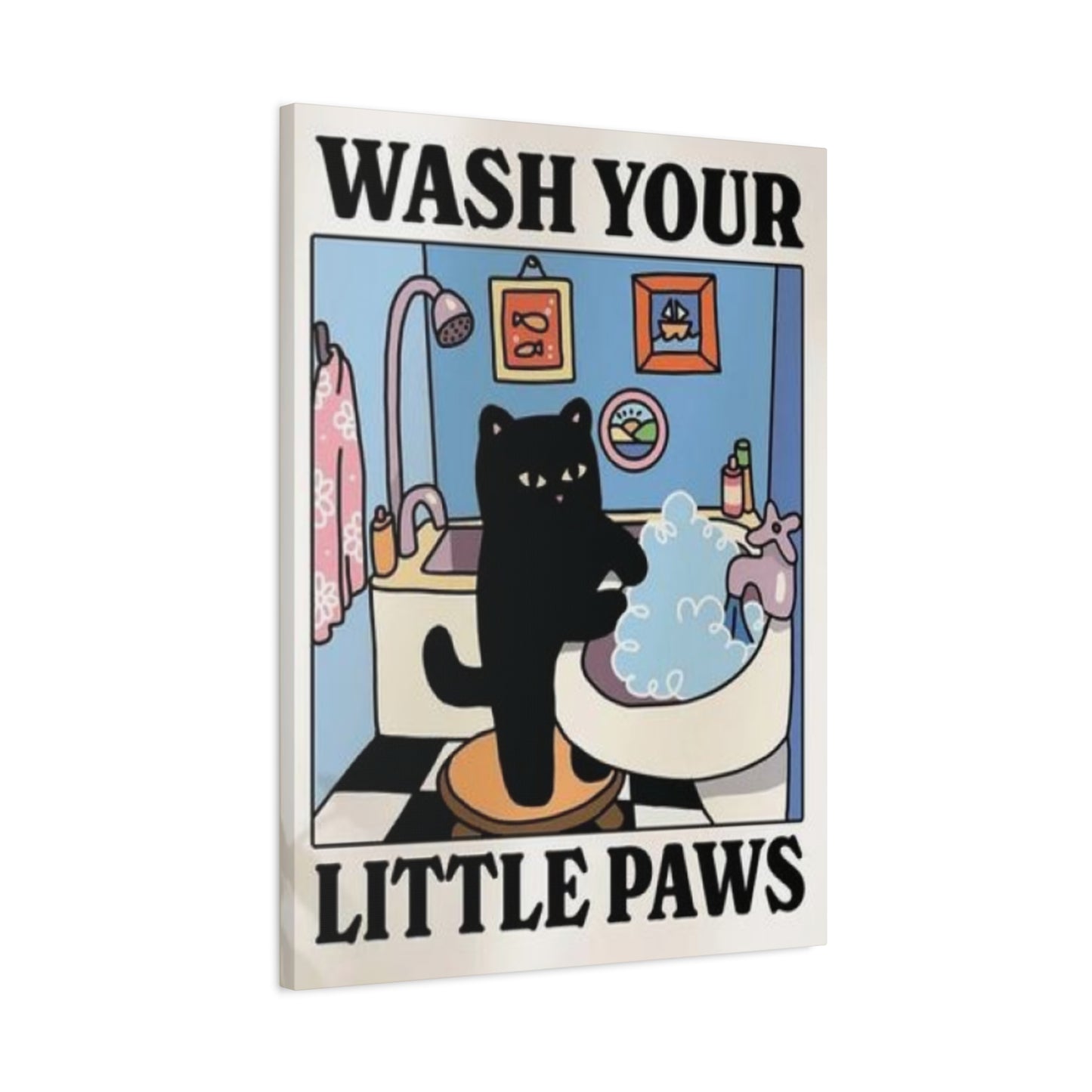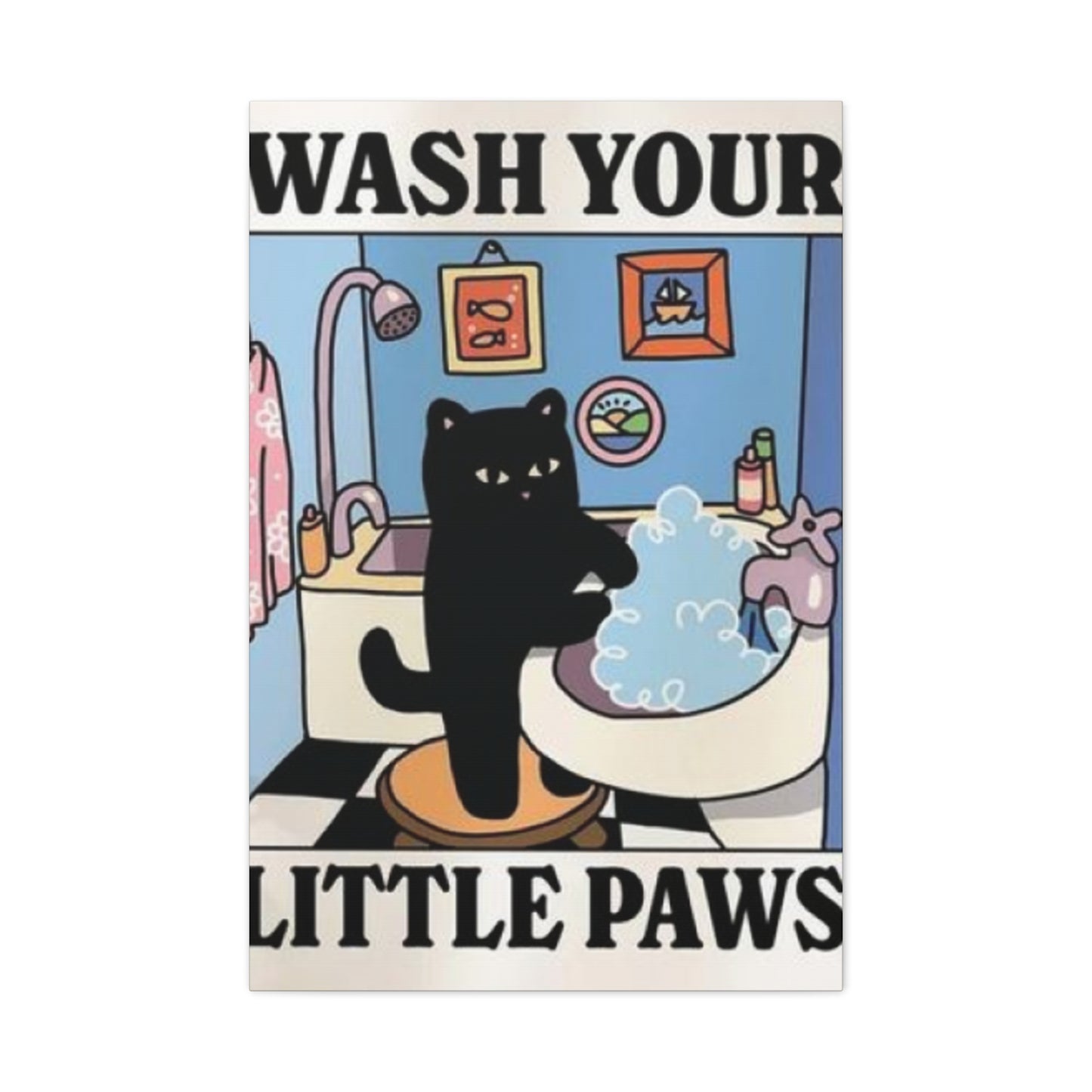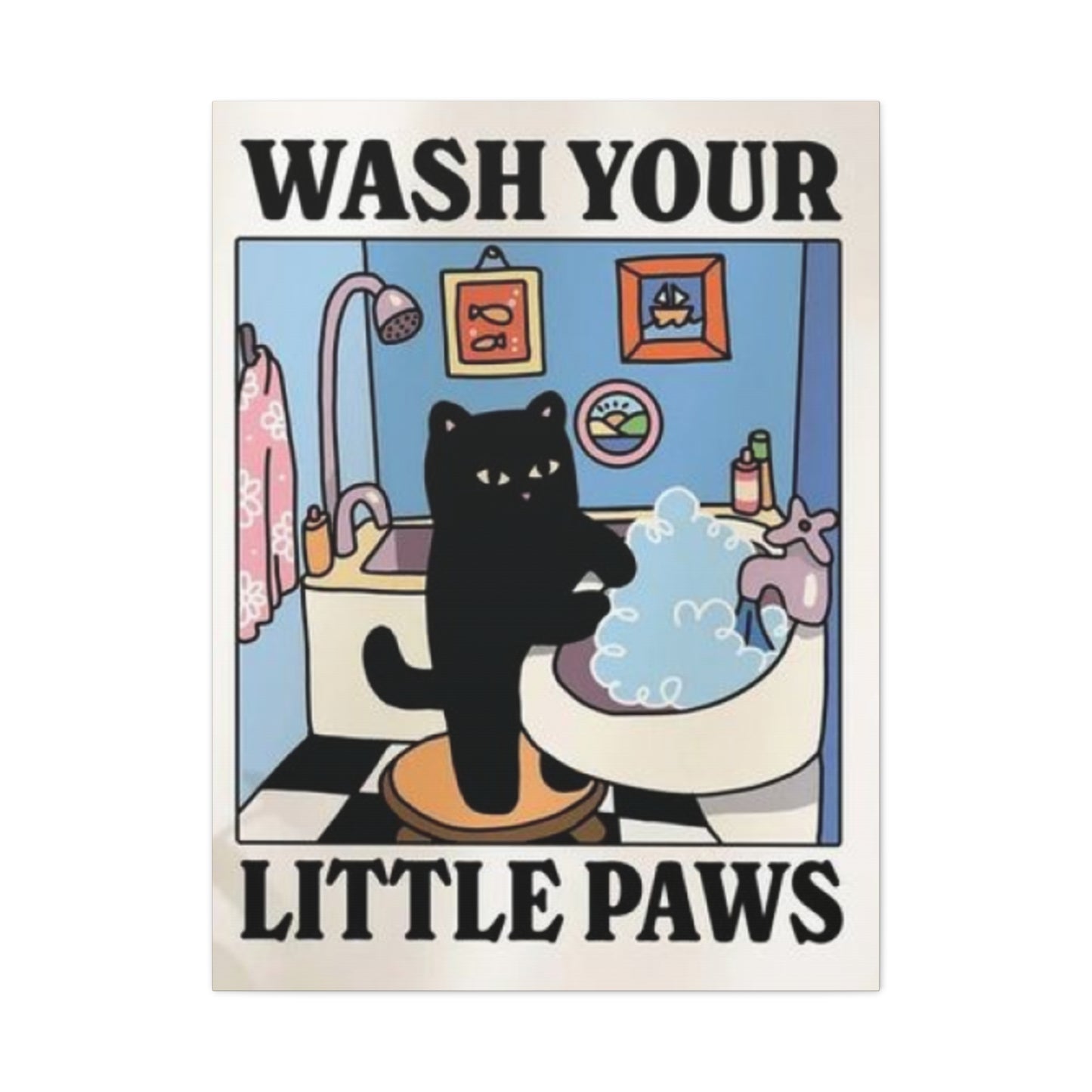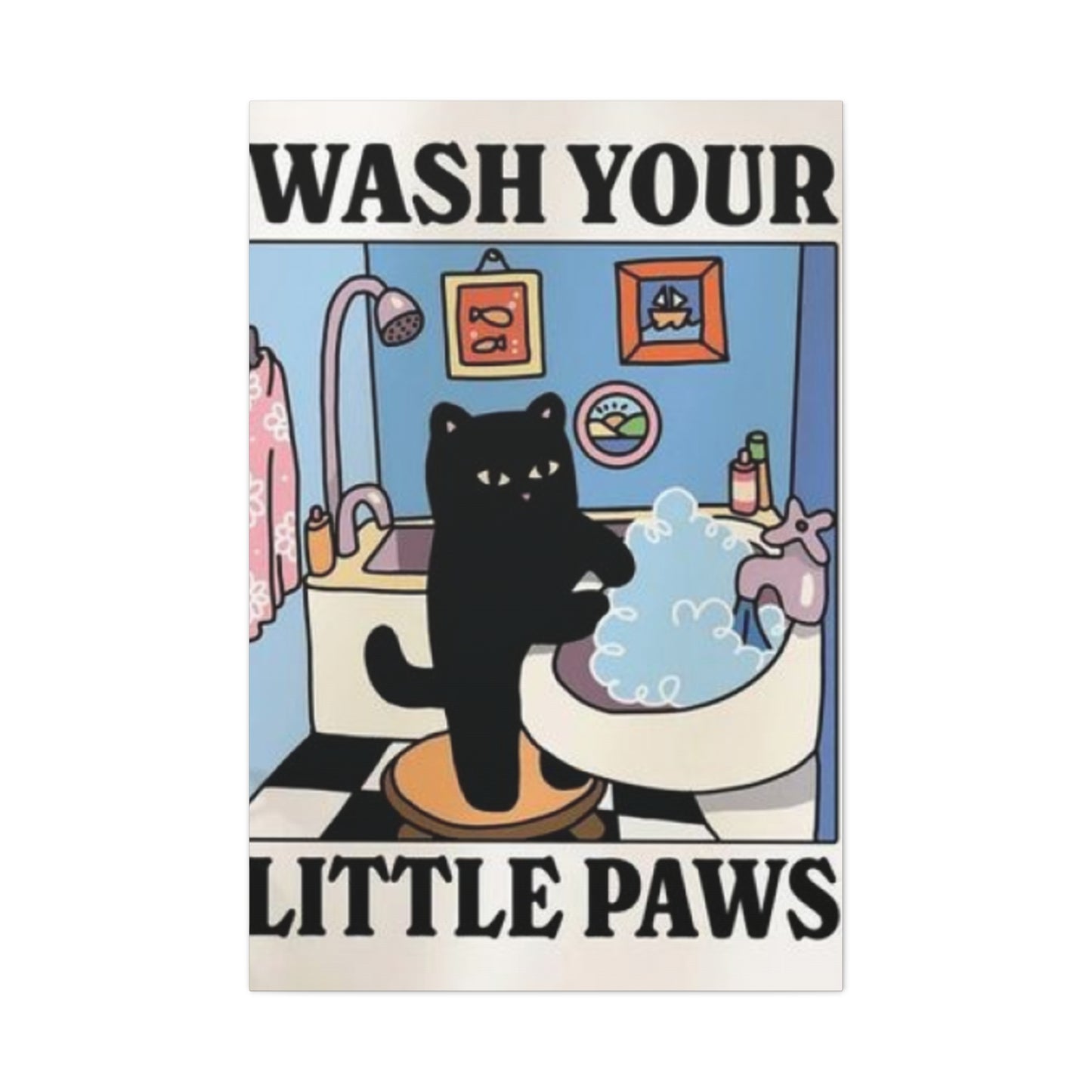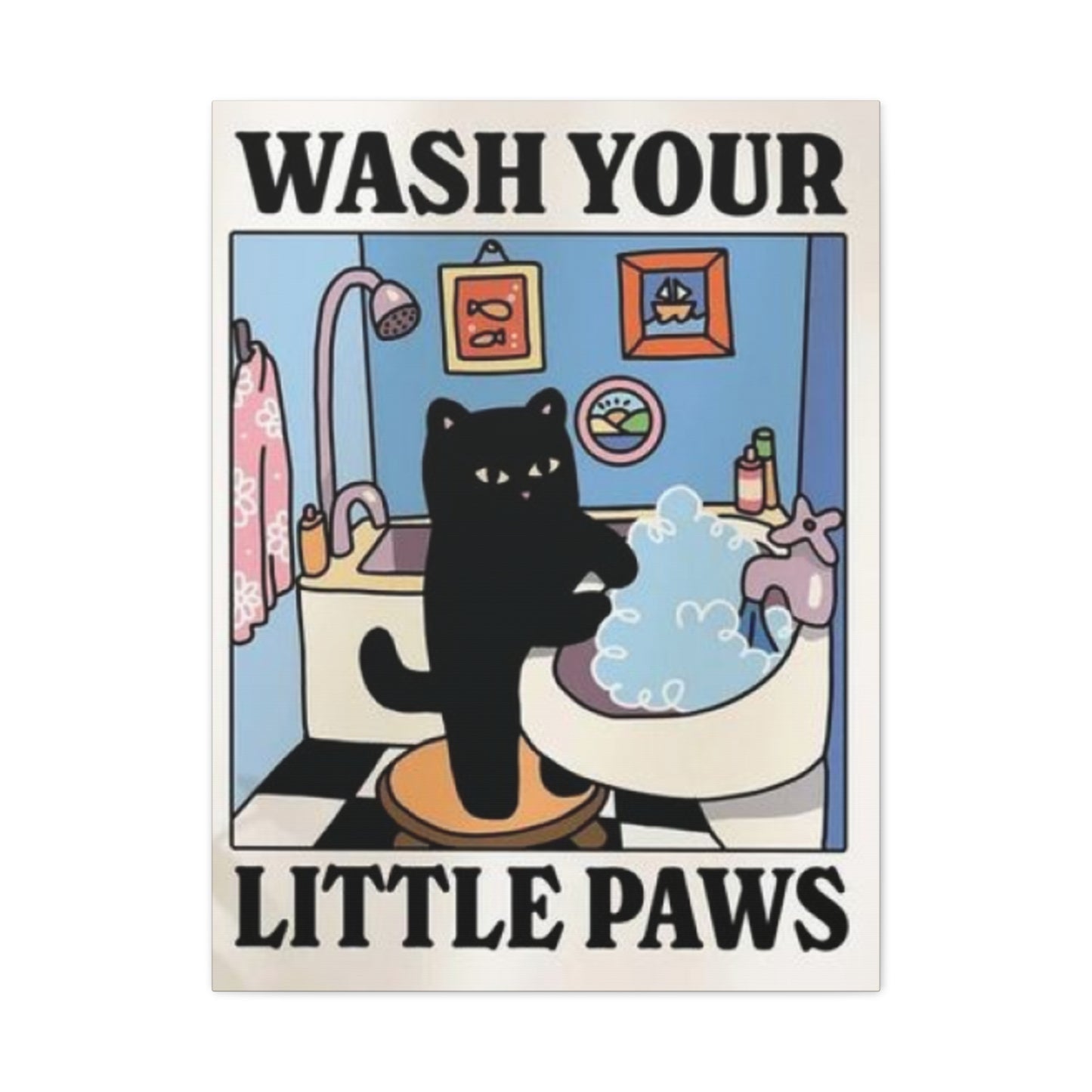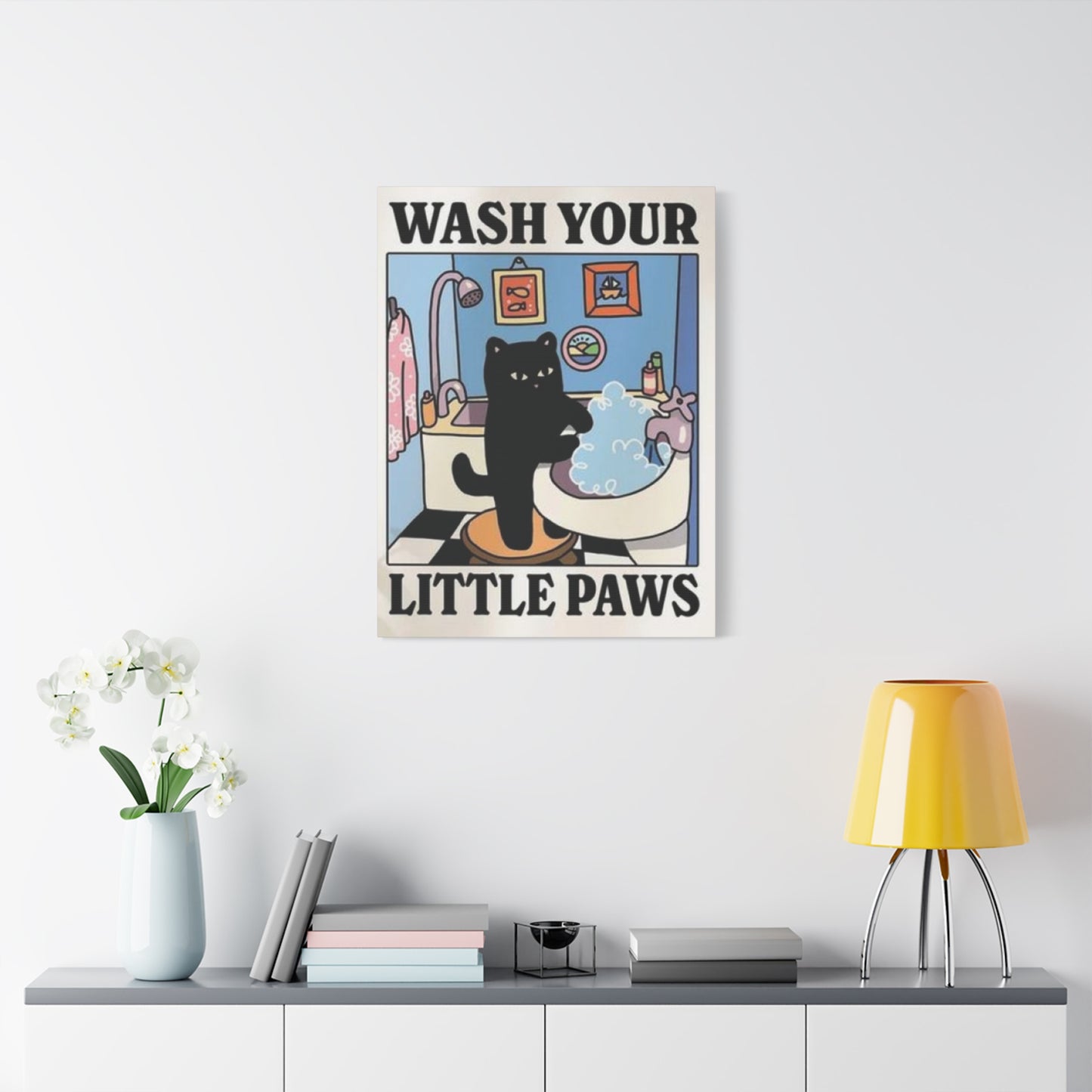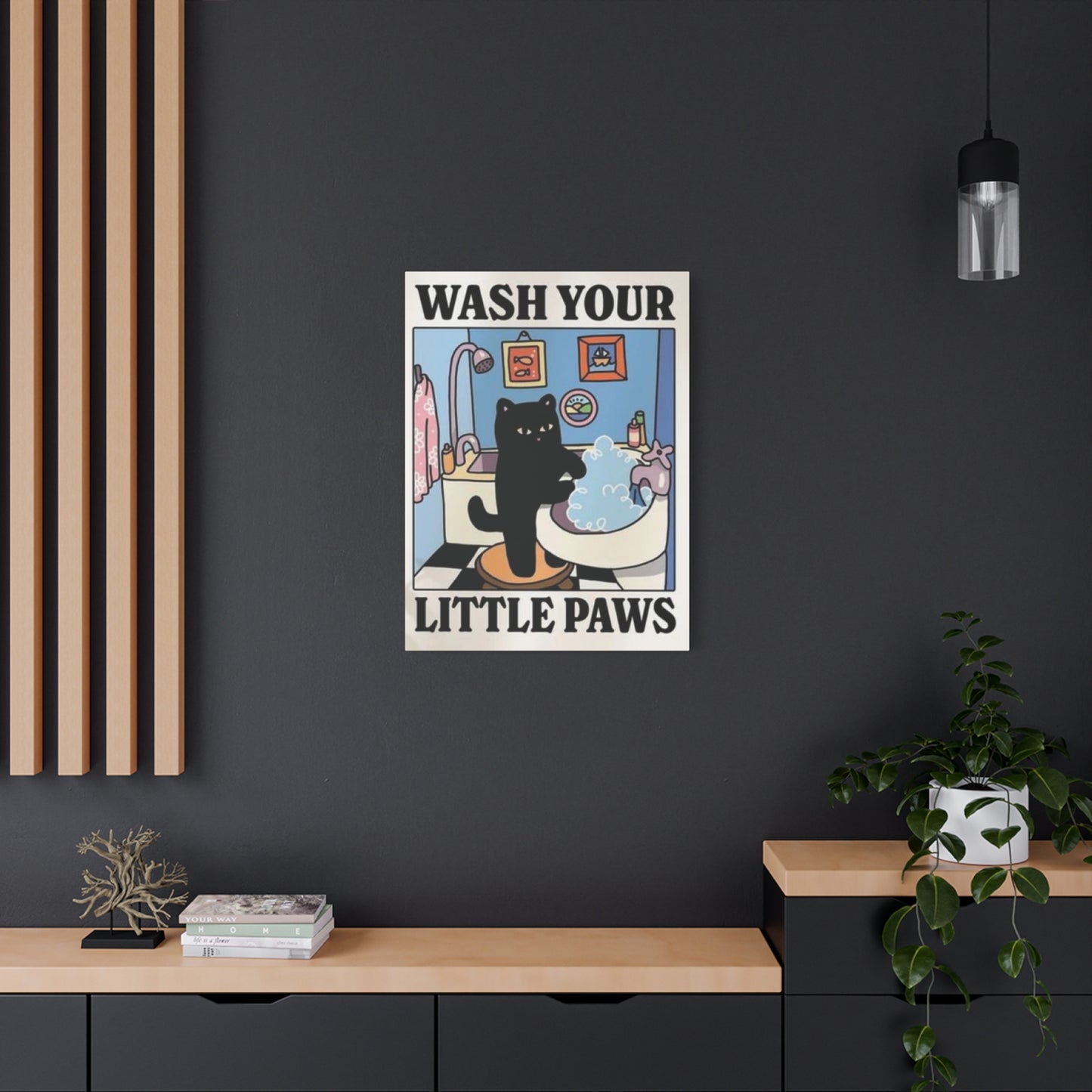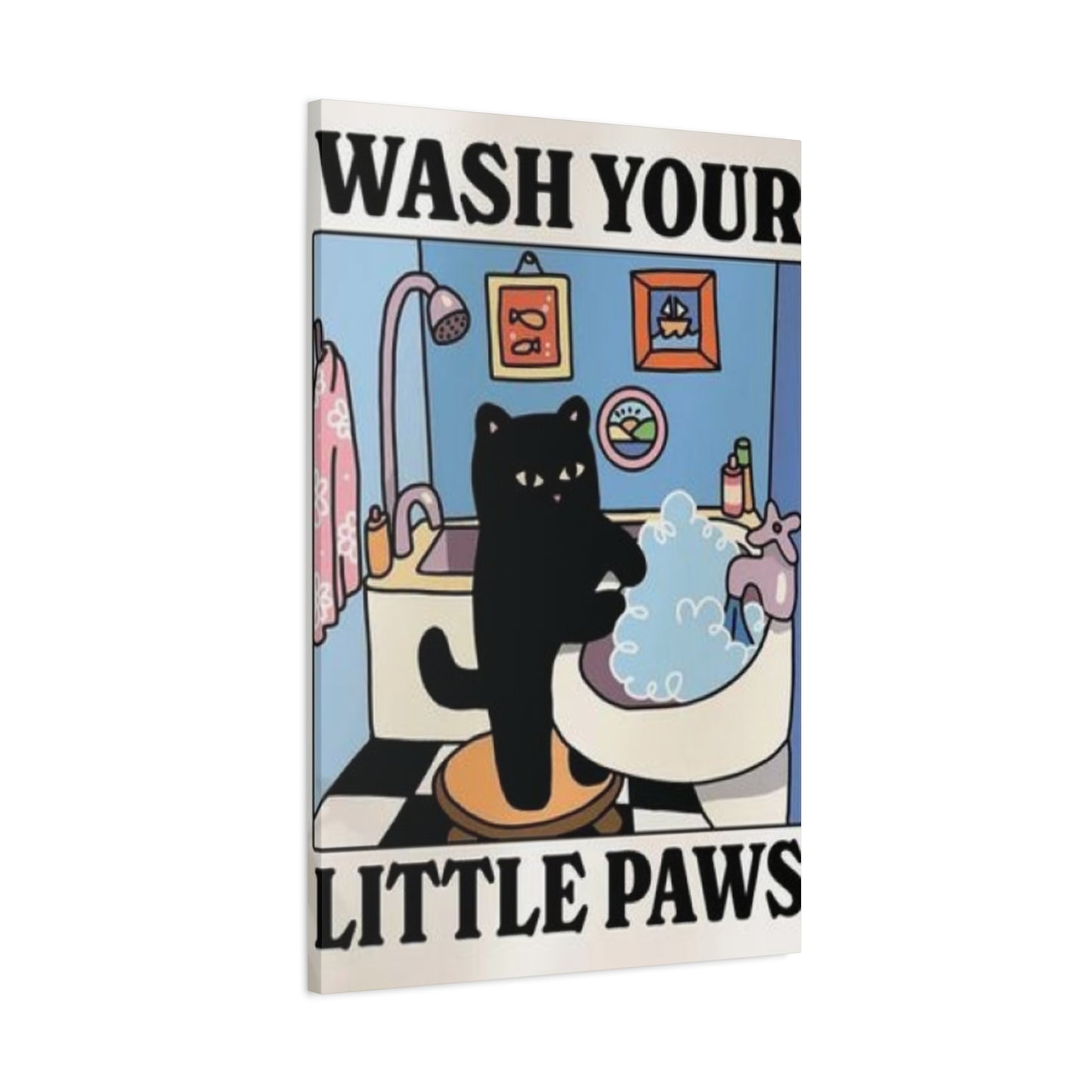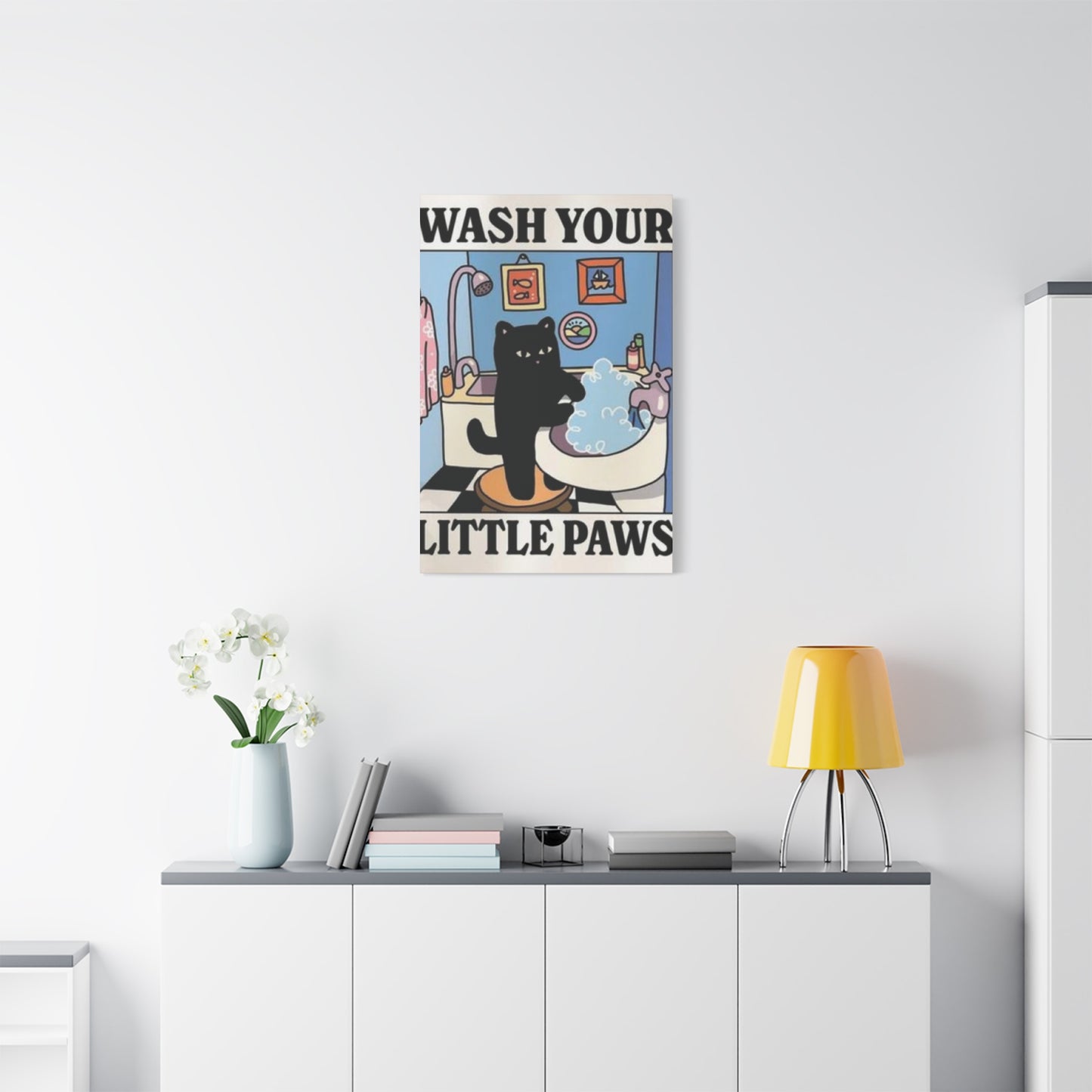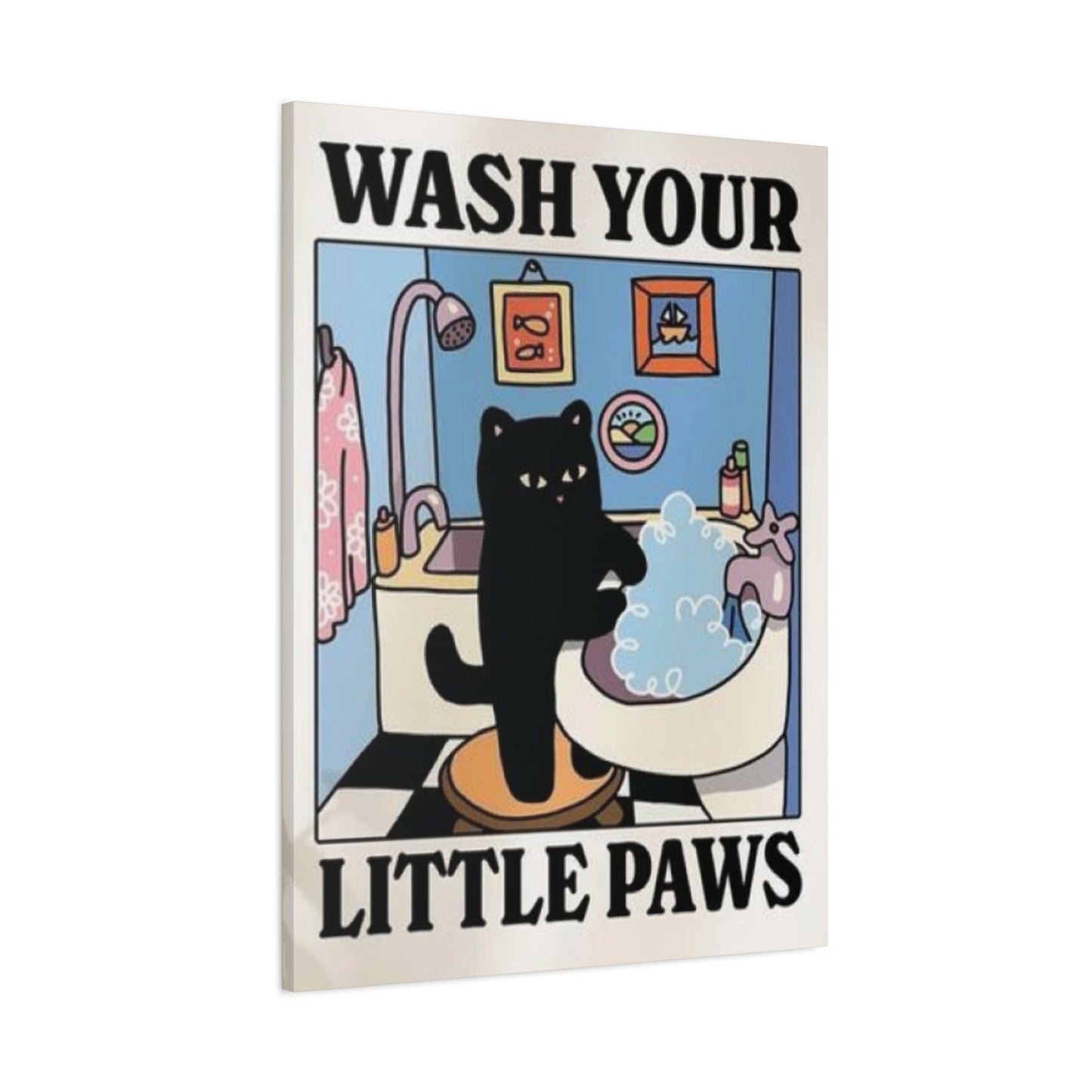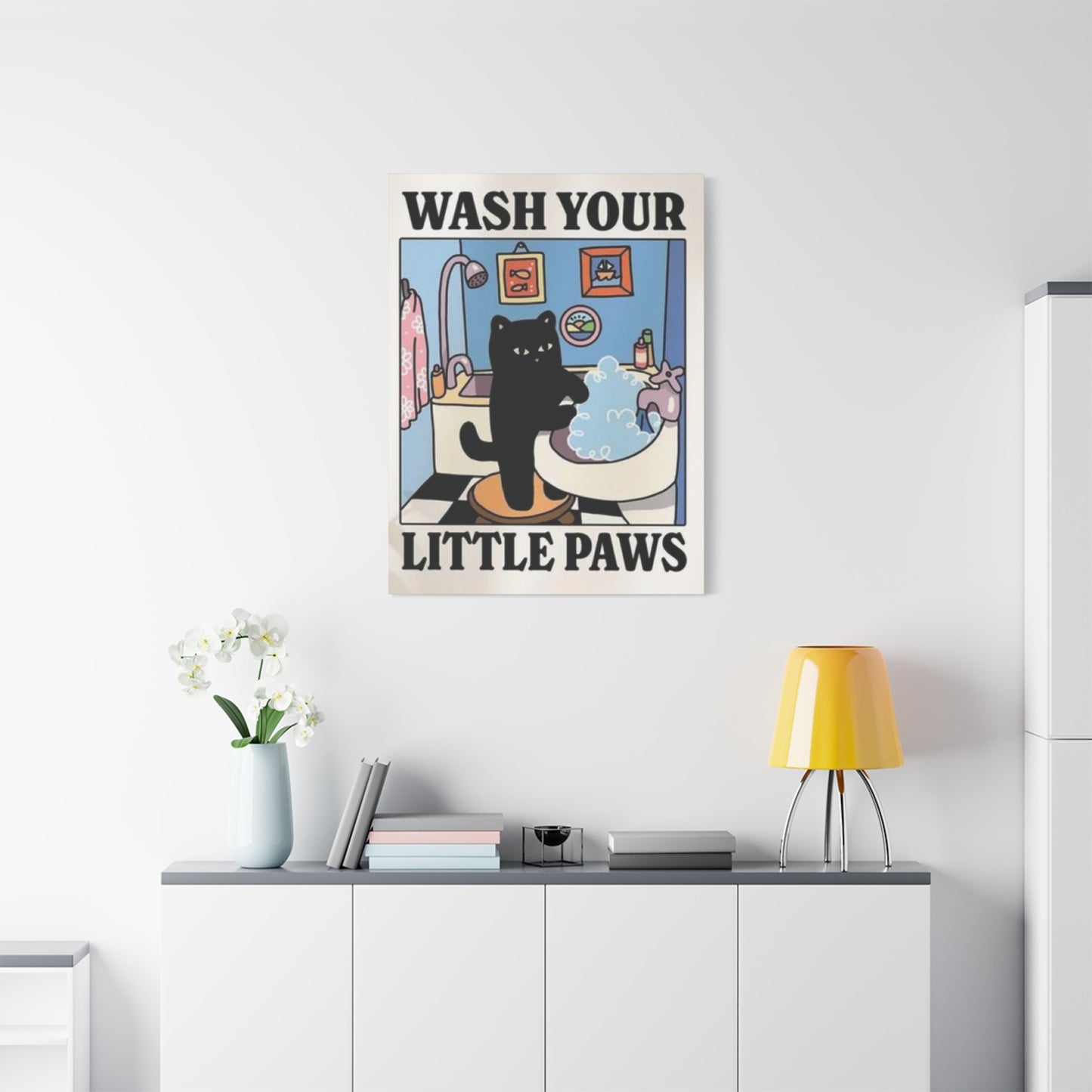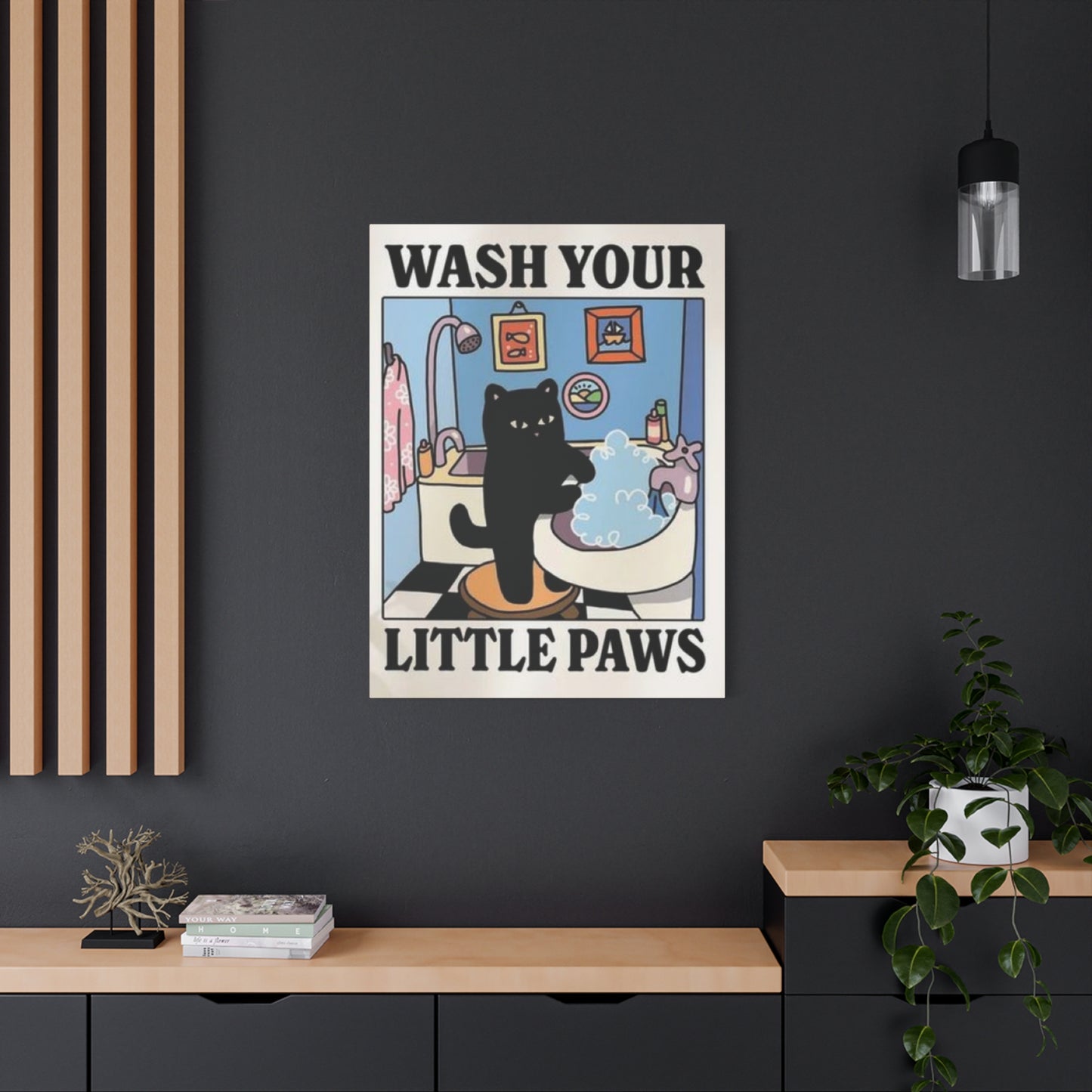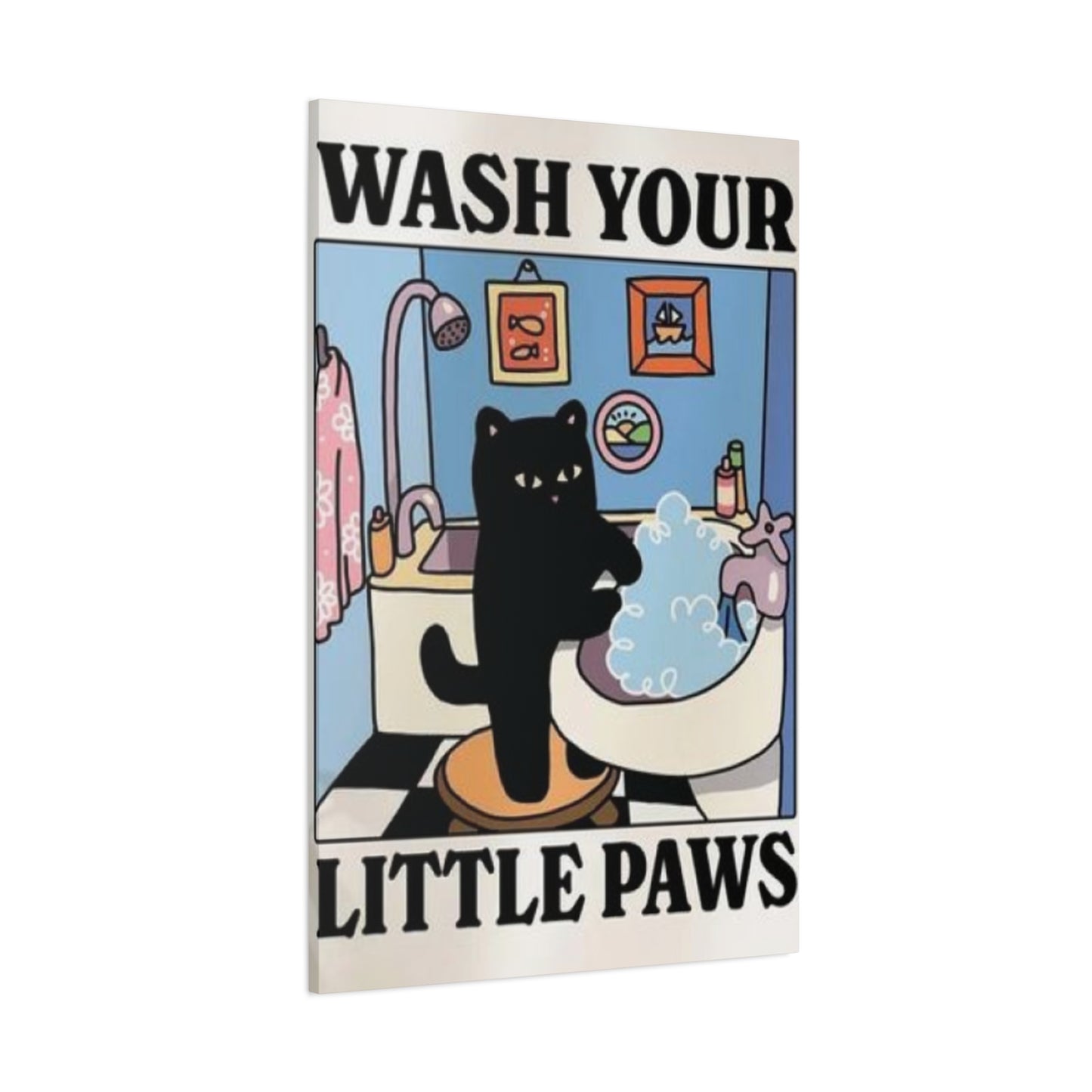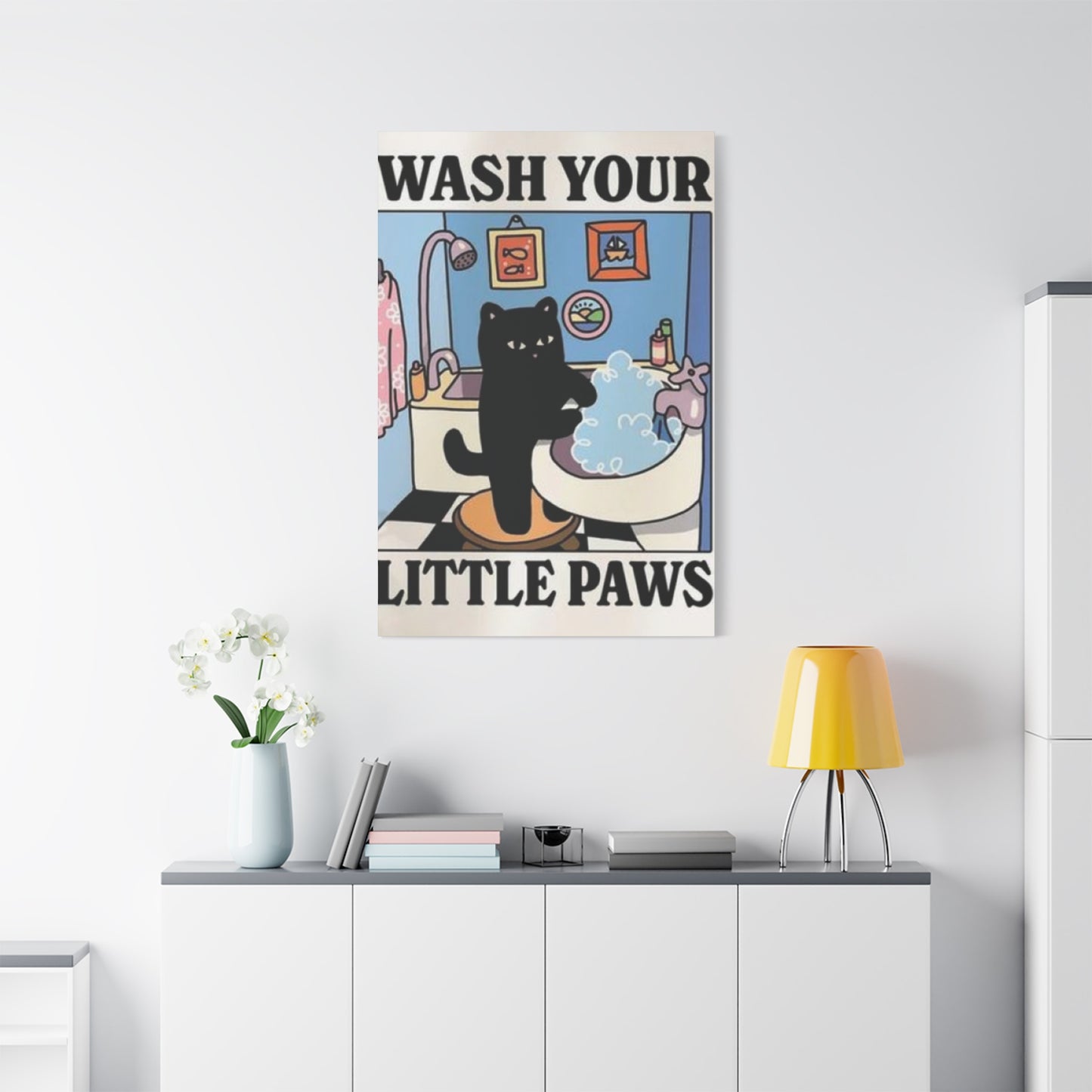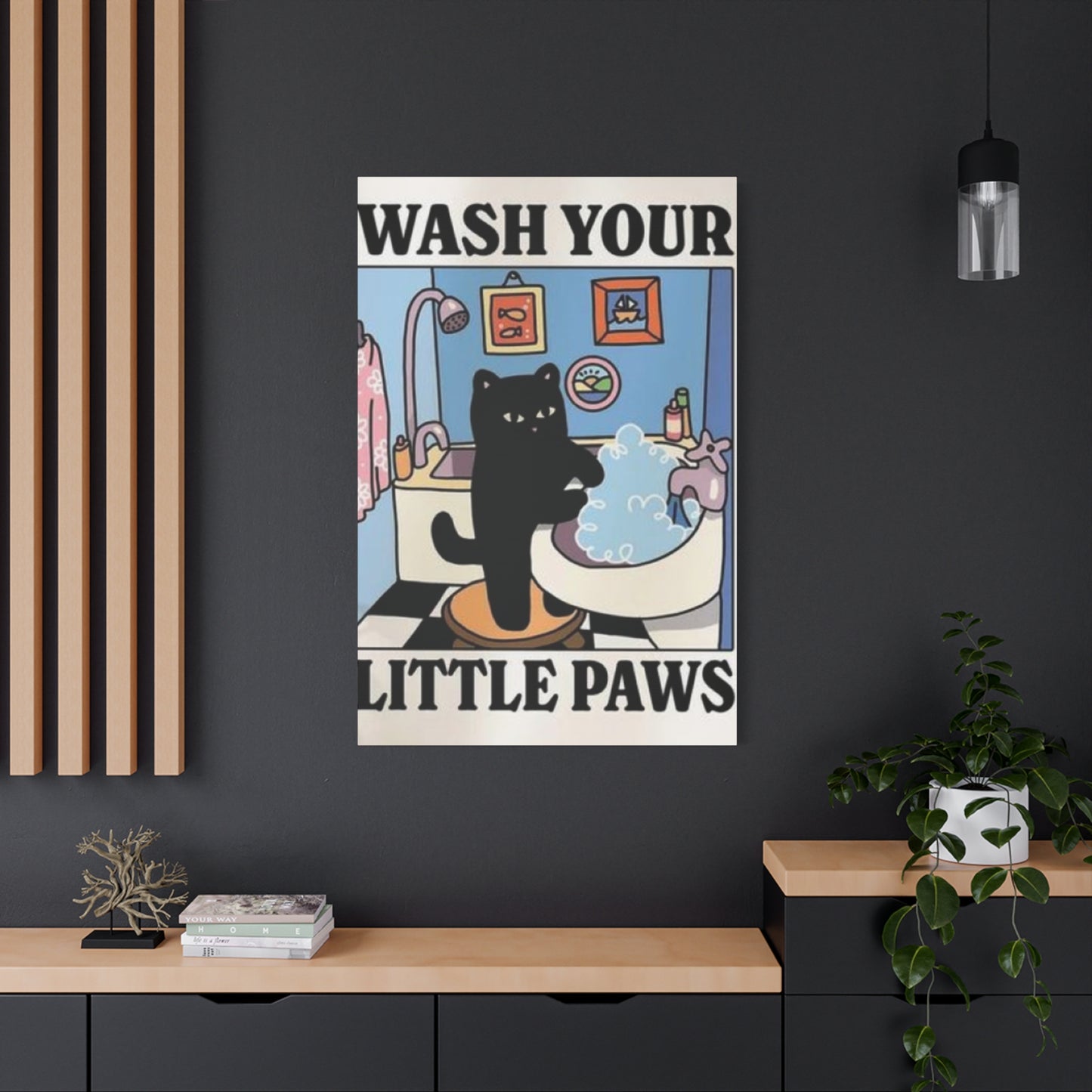Pet Lover’s Paradise: Decorating Bathrooms and Laundry Wall art Rooms with Wash Your Paws Art
The intersection of pet ownership and home decoration has created a vibrant niche in interior design, where functionality meets whimsical charm. Among the most delightful expressions of this trend are paw-themed posters and wall art designed specifically for spaces like laundry rooms and bathrooms. These decorative pieces serve a dual purpose: they add personality to often-overlooked areas of the home while gently reminding household members about hygiene practices in a lighthearted, engaging manner.
Paw-themed decor has evolved significantly from simple cartoon drawings to sophisticated artistic interpretations that can complement virtually any interior design style. Whether your home aesthetic leans toward rustic farmhouse, modern minimalist, vintage cottage, or eclectic bohemian, there exists a paw-themed poster design that can seamlessly integrate into your space. The beauty of these decorative elements lies in their versatility and their ability to inject warmth and humor into utilitarian rooms that might otherwise feel purely functional.
The concept of incorporating animal imagery into home decor is nothing new, but the specific focus on paw prints and pet-related messaging for laundry and bathroom spaces represents a relatively recent development in interior design trends. This movement reflects a broader cultural shift toward celebrating pet ownership and acknowledging the integral role animals play in our daily lives. Rather than hiding evidence of our furry companions, modern homeowners are embracing designs that celebrate this aspect of their households.
When considering paw-themed wall art for laundry rooms or bathrooms, the possibilities extend far beyond simple decorative appeal. These pieces can serve educational purposes for children, teaching them about hygiene and responsibility in caring for pets. They can also function as conversation starters when guests visit, revealing your personality and values through your decorating choices. Additionally, they contribute to creating a cohesive design narrative throughout your home, connecting different spaces through shared themes and visual elements.
The popularity of such decor items has surged in recent years, driven partly by the growth of online marketplaces and independent artists who can now reach pet-loving consumers directly. This democratization of design has resulted in an explosion of creative interpretations, from hand-lettered typography paired with watercolor paw prints to minimalist line drawings and vintage-inspired illustrations. The variety ensures that pet owners with discerning tastes can find artwork that genuinely resonates with their aesthetic preferences rather than settling for generic options.
Why Laundry Rooms Deserve Thoughtful Decoration
Laundry rooms have traditionally been relegated to the status of purely functional spaces, often located in basements or tucked away in corners where aesthetic considerations took a back seat to practical concerns. However, contemporary home design philosophy recognizes that we spend considerable time in these spaces, making them worthy of the same decorative attention we lavish on more visible areas of our homes. The average household does laundry multiple times per week, translating to hours spent in this environment over the course of a year.
Transforming your laundry room into a space that brings joy rather than feeling like a chore begins with acknowledging its importance in your daily routine. Adding thoughtful decorative touches, such as paw-themed posters, can significantly improve your emotional response to laundry tasks. When surrounded by imagery that makes you smile or reflects your love for your pets, the mundane activity of washing clothes becomes slightly more pleasant. This psychological shift should not be underestimated, as our environment profoundly influences our mood and energy levels.
The laundry room also presents unique decorating challenges that make paw-themed art particularly suitable. These spaces often have limited square footage but feature expansive wall areas above machines or between cabinets that can accommodate artwork. The humidity and temperature fluctuations characteristic of laundry rooms require durable decorative elements, and framed posters with protective glass meet this requirement admirably. Additionally, the playful nature of paw-themed designs complements the somewhat whimsical task of sorting through family members' clothing, including inevitably finding pet hair despite best efforts.
Another compelling reason to decorate your laundry room thoughtfully relates to property value and buyer appeal. When selling a home, potential buyers appreciate spaces that feel finished and intentional rather than neglected afterthoughts. A well-decorated laundry room signals that the homeowners have maintained the property carefully throughout, paying attention to details even in utilitarian spaces. While paw-themed decor specifically appeals to pet owners, the broader principle of thoughtful decoration applies universally.
For families with children, the laundry room can become an educational space where kids learn about responsibility, household maintenance, and even basic chemistry through understanding how detergents work. Decorative elements that incorporate playful imagery make this space more inviting for young helpers, potentially increasing their willingness to participate in age-appropriate tasks. A poster featuring paw prints alongside messages about cleanliness can reinforce lessons about hygiene that extend beyond human family members to include proper pet care.
The trend toward creating attractive laundry rooms has also been influenced by the growing number of homes featuring first-floor or even kitchen-adjacent laundry facilities. When your laundry area is visible to guests or integrated into more public spaces of your home, the impetus to make it visually appealing increases substantially. Paw-themed art offers a solution that is both decorative and personality-revealing, allowing you to express your identity as a pet owner while maintaining a polished appearance.
Bathroom Spaces and Pet-Friendly Design Elements
Bathrooms present another excellent opportunity for incorporating paw-themed decor, particularly when household members need gentle reminders about hygiene practices. The concept of a poster encouraging handwashing through playful pet imagery bridges the gap between public health messaging and personal expression. In homes with pets, bathrooms often serve as spaces where animals drink from faucets, curl up on bath mats, or simply keep their owners company, making pet-themed decoration feel particularly appropriate.
The bathroom environment requires special consideration when selecting wall art due to moisture exposure, temperature variations, and the need for easy cleaning. Laminated posters or those protected by glass frames work well in these conditions, maintaining their appearance despite the challenging environment. The key is selecting materials that can withstand occasional splashing and the general humidity that accompanies showering and bathing without warping, fading, or developing mold.
Incorporating paw-themed elements into bathroom decor also offers an opportunity to create visual cohesion between this space and other areas of your home. If your living room features pet portraits or your mudroom includes paw print hooks, extending this theme into the bathroom creates a sense of intentional design throughout your property. This cohesive approach to decoration makes spaces feel more professionally designed rather than haphazardly assembled, elevating the overall impression your home makes.
From a practical standpoint, bathrooms benefit from decor that serves multiple functions. A poster reminding family members to wash their paws accomplishes the decorative goal while also serving as a gentle behavioral prompt. This becomes especially valuable in households with children who may need frequent reminders about hygiene practices. The playful presentation makes the message more engaging than a stern directive, potentially increasing compliance through humor rather than nagging.
The psychology of bathroom design also plays a role in the effectiveness of decorative choices. This is an intimate space where we spend time alone, making it an ideal location for personal expression through decor. Choosing artwork that reflects your love for animals creates a small moment of joy during routine activities like brushing teeth or washing hands. These micro-moments of pleasure accumulate over time, contributing to overall life satisfaction in subtle but meaningful ways.
Bathroom decor also offers opportunities for seasonal rotation or thematic updates that keep your space feeling fresh. While a paw-themed poster might serve as your year-round anchor piece, you can supplement it with seasonal elements that complement the core design. This approach allows you to indulge creative impulses without committing to major renovations, making bathroom decoration an accessible form of self-expression regardless of budget constraints.
Design Styles for Paw Print Wall Art
The artistic interpretation of paw prints varies dramatically across different design movements, offering options for virtually every aesthetic preference. Rustic farmhouse style typically features paw prints rendered in neutral tones, often paired with distressed wood frames and hand-lettered typography that mimics vintage signage. This approach evokes a sense of pastoral simplicity and timeless charm, making it popular among those who appreciate traditional aesthetics with a cozy, lived-in feeling.
Modern minimalist interpretations take a dramatically different approach, reducing paw prints to their essential geometric forms and employing monochromatic color schemes or limited palettes. These designs prioritize clean lines, negative space, and sophisticated simplicity, appealing to those who prefer uncluttered visual environments. A minimalist paw print poster might feature a single print in matte black against a white background, framed in sleek aluminum or left unframed for a contemporary gallery appearance.
Vintage-inspired designs draw from mid-century aesthetics, often incorporating retro color combinations like mint green with coral, mustard yellow with teal, or burnt orange with olive. These pieces might feature typography reminiscent of old advertisements or instructional posters, giving them a nostalgic quality that appeals to collectors of vintage items. The slightly weathered appearance common in this style adds character and visual interest without overwhelming smaller spaces.
Whimsical and cartoon-inspired designs lean into playful representations of paw prints, sometimes personifying them with faces or incorporating them into larger narratives featuring illustrated animals. This style particularly appeals to families with young children or individuals who embrace a more lighthearted approach to home decoration. The cheerful colors and friendly imagery create an inviting atmosphere that can make mundane spaces feel more welcoming.
Watercolor interpretations offer a softer, more artistic approach to paw print imagery. These designs feature the fluid, organic qualities characteristic of watercolor painting, with colors bleeding into one another and varied opacity creating depth and interest. This style works particularly well in homes with other artistic elements, as it signals an appreciation for fine art techniques while maintaining accessibility through its subject matter.
Typographic designs prioritize the message over imagery, featuring paw prints as supporting elements to prominent text. These pieces often employ sophisticated font combinations, mixing serif and sans-serif typefaces to create visual hierarchy and interest. The focus on words makes these designs particularly effective when the goal includes behavioral prompting, such as encouraging handwashing or reminding family members about pet care responsibilities.
Typography and Message Crafting in Pet Decor
The words accompanying paw print imagery significantly influence the overall impact of decorative pieces. Humorous messages play on the double meaning of paws versus hands, creating lighthearted reminders about hygiene that feel less authoritarian than straightforward directives. Phrases encouraging viewers to wash their paws cleverly anthropomorphize human family members while celebrating the pets who share our homes, striking a balance between functional messaging and personality expression.
The font selection for these messages deserves careful consideration, as typography communicates tone and style as powerfully as the words themselves. Script fonts evoke elegance and tradition, working well in formal or vintage-inspired designs. Sans-serif fonts project modernity and clarity, ideal for minimalist or contemporary aesthetics. Display fonts with unique characteristics can add personality and whimsy, though they require restraint to avoid overwhelming the overall composition or compromising legibility.
Message length also impacts effectiveness. Brief, punchy phrases create immediate impact and remain memorable, while longer messages allow for more detailed communication or storytelling. In spaces like bathrooms where viewers spend limited time, concise messages typically work better than elaborate text. However, in laundry rooms where people might spend extended periods folding clothes or waiting for cycles to complete, more substantive text can provide entertainment or reflection opportunities.
Multilayered messaging, which works on both literal and metaphorical levels, adds depth to decorative pieces. A poster about washing paws can simultaneously serve as a hygiene reminder for humans and reference actual pet care practices. This duality creates richer meaning that rewards repeated viewing, preventing decorative elements from becoming invisible through overfamiliarity. The cognitive pleasure of recognizing multiple interpretations contributes to the enduring appeal of clever design.
The tone of messaging should align with your household personality and the intended audience. Families with young children might prefer cheerful, encouraging language that makes hygiene fun rather than feeling like a chore. Adult-focused households might appreciate drier humor or more sophisticated wordplay that acknowledges the absurdity of daily routines. Matching the message tone to your audience increases the likelihood that the behavioral prompting aspect actually influences habits.
Cultural considerations also play a role in message crafting, particularly for multilingual households or those with diverse cultural backgrounds. While paw-related wordplay translates across many contexts, specific phrases or humor styles may not resonate universally. Choosing designs with universal appeal or creating custom pieces that reflect your specific cultural context ensures your decor feels personally meaningful rather than generic.
Placement Strategies for Maximum Impact
Strategic positioning of paw-themed wall art maximizes both its decorative contribution and functional effectiveness. In laundry rooms, placement above washing machines or dryers creates a natural focal point at eye level when standing at the machines. This positioning ensures regular viewing during laundry tasks, allowing decorative elements to fulfill their role of brightening the space and potentially influencing behavior through repeated exposure to messages.
Alternative laundry room placements include walls adjacent to folding areas or sorting stations, where family members spend time during different phases of the laundry process. Creating a small gallery wall that includes the paw-themed poster alongside complementary pieces develops visual interest and prevents any single element from feeling isolated or disconnected from the room's overall design. The gallery approach also allows for easier updates, as you can rotate pieces seasonally or when design preferences evolve.
Bathroom placement typically centers on walls opposite or adjacent to sinks, where handwashing occurs and the message about paw cleanliness feels most relevant. Positioning artwork at eye level for average-height adults ensures maximum visibility, though households with young children might consider slightly lower placement to engage younger viewers. The space above towel bars or between bathroom fixtures often goes unused, presenting opportunities for artwork that makes these transitional areas feel more intentional.
Lighting conditions significantly impact how artwork appears and how much attention it receives. In windowless bathrooms or laundry rooms, proper artificial lighting becomes essential for artwork to fulfill its decorative potential. Consider adding picture lights or ensuring existing fixtures illuminate wall art adequately. In spaces with natural light, be mindful of direct sunlight exposure, which can fade artwork over time regardless of material quality. UV-protective glass or strategic placement prevents premature deterioration.
The relationship between artwork and surrounding elements requires consideration for cohesive design. Paw-themed posters should complement rather than compete with other decorative elements, functional features, or storage solutions in the space. Leaving appropriate negative space around artwork prevents visual crowding and allows each piece to make its intended impact. The principle of odd-numbered groupings, where three or five pieces work better than two or four, applies when creating collections that include your paw-themed poster.
Height variation in multi-piece installations creates dynamic visual interest that flat, uniformly-hung arrangements cannot achieve. While maintaining relationships between pieces, varying the vertical positioning by a few inches prevents the static appearance of perfectly aligned artwork. This approach mimics professional gallery hanging techniques, lending sophistication to your home gallery installations.
Seasonal and Holiday Adaptations
Paw-themed decor lends itself beautifully to seasonal adaptations that keep your spaces feeling fresh throughout the year without requiring complete redecoration. Spring versions might incorporate floral elements alongside paw prints, using pastel colors and imagery suggesting renewal and outdoor exploration. These designs celebrate the season when pets and owners alike emerge from winter hibernation to enjoy warmer weather and blooming landscapes.
Summer adaptations could feature beach-themed paw prints in sand, nautical color schemes with navy and white, or imagery suggesting outdoor adventures like hiking or swimming. These seasonal variations maintain the core paw print concept while contextualizing it within summer activities, creating thematic coherence between your decor and the world outside your windows. The bright, energetic colors typical of summer designs inject vitality into utility spaces during the season of peak natural light.
Autumn brings opportunities for incorporating warm color palettes featuring oranges, reds, and browns reminiscent of changing leaves. Paw prints might be styled to appear as autumn leaves themselves or positioned alongside imagery of cozy indoor activities as weather turns cooler. The nostalgic, comfort-seeking mood of autumn resonates well with the pet-loving sentiment that underlies paw-themed decor, creating emotional synergy between season and design.
Winter and holiday-specific adaptations offer perhaps the most dramatic seasonal variations. Paw prints in snow, decorated with holiday elements, or incorporated into winter sports imagery all provide festive alternatives to year-round designs. These pieces celebrate the special relationship many people share with their pets during holiday seasons, when extra time at home means more opportunities for animal companionship. The cozy, indoor-focused nature of winter aligns perfectly with the domestic spaces where paw-themed decor typically appears.
Creating a rotation system for seasonal artwork prevents decoration fatigue and maintains visual interest throughout the year. This approach requires storage solutions for off-season pieces, but the relatively small size of most posters makes this manageable even in homes with limited storage space. Some homeowners maintain coordinated sets of seasonal decor that transform multiple rooms simultaneously, creating whole-home thematic coherence that feels professionally designed.
The decision between seasonal rotation and year-round display depends partly on your commitment to regular decoration updates and partly on the specific design of your chosen artwork. Some paw-themed pieces feature neutral, timeless designs that transcend seasonal associations, making them suitable for permanent display. Others incorporate elements that firmly place them within specific seasons, making rotation necessary to avoid discord between decor and calendar.
DIY Approaches to Custom Paw Art
Creating custom paw-themed artwork allows for perfect alignment with your specific design preferences, pet personalities, and space requirements. One accessible approach involves using your actual pet's paw prints, captured with non-toxic paint or ink pads designed for this purpose. These authentic prints can be scanned and digitally manipulated to create personalized poster designs that celebrate your specific animals rather than generic representations. The personal connection to artwork featuring your own pet's prints adds sentimental value that purchased pieces cannot match.
Digital design tools have democratized custom artwork creation, with user-friendly software and apps allowing people without formal design training to produce professional-quality results. Programs offering templates, font libraries, and design elements enable you to combine paw print imagery with customized text, colors, and layouts. The learning curve for basic design software has decreased dramatically, making this hobby accessible to anyone with patience and willingness to experiment.
Hand-lettering and calligraphy techniques combined with simple stamped or stenciled paw prints create artwork with handmade charm that mass-produced pieces lack. This approach particularly suits individuals who enjoy craft activities and want their home decor to reflect their personal creative efforts. The slight imperfections inherent in handmade items add character and warmth, distinguishing your artwork from factory-produced alternatives while showcasing your personal talents.
Collage techniques incorporating photographs of your pets with paw print elements create narrative artwork that tells stories about your relationships with your animals. These mixed-media pieces might include favorite memories, special occasions, or daily moments that capture your pets' personalities. The storytelling aspect transforms decoration into documentation, creating pieces that function as both art and family archives.
Printing services have evolved to offer affordable custom printing on various materials, making it possible to translate your digital or physical creations into durable, display-ready formats. Local print shops, online services, and even home printers with quality photo paper can produce results suitable for framing and display. Understanding basic printing specifications like resolution requirements, color profiles, and material options ensures your custom designs translate effectively from concept to physical object.
Framing completes the presentation of DIY artwork, and the frame selection significantly impacts the overall aesthetic. Budget-friendly options from home goods stores offer surprising variety, while thrift stores and estate sales sometimes yield unique vintage frames that add character to custom pieces. Learning basic frame assembly and mat cutting expands your options further, allowing you to create truly custom presentations that perfectly suit your artwork dimensions and style preferences.
Pet Breed-Specific Design Variations
Different dog breeds feature distinctly shaped paw prints, and artwork celebrating specific breeds can incorporate these variations for added authenticity and personalization. Large breeds like Great Danes or Saint Bernards have substantially bigger paws than small breeds like Chihuahuas or Pomeranians, and representing these differences accurately adds charm and specificity to decor. Breed-specific designs appeal particularly to owners who participate in breed communities or who identify strongly with their chosen breed's characteristics.
Cat paw prints differ from dog prints in their shape and the presence or absence of claw marks, offering another avenue for species-specific customization. Cat enthusiasts might prefer feline paw imagery that celebrates their pets' unique qualities, distinguishing their decor from the dog-dominated pet market. The slightly smaller, more delicate appearance of cat paws lends itself to different design aesthetics, often feeling more refined or subtle than bolder dog print designs.
Multi-pet households face the pleasant challenge of representing all their animal companions in decor choices. Designs featuring multiple paw print types or sizes acknowledge the diverse household composition and celebrate the unique dynamics of homes with several pets. This inclusive approach ensures all family members, human and animal alike, feel represented in the home's decorative narrative.
Exotic pets like rabbits, guinea pigs, ferrets, or even chickens for urban farmers present opportunities for truly unique decor that stands out from standard dog and cat imagery. These less common choices reflect specialized interests and can serve as conversation starters, revealing aspects of your lifestyle and interests that guests might not otherwise discover. The relative rarity of such designs in mainstream markets makes custom creation often necessary, adding to their uniqueness.
Working animals and service animals deserve recognition through specialized decor that honors their contributions to households and society. Designs acknowledging service dogs, therapy animals, or working farm animals celebrate the special relationships humans forge with animals who provide assistance beyond companionship. These pieces can carry deeper meaning, representing gratitude and respect alongside affection.
Breed personality traits often influence design style choices. Owners of dignified, serious breeds might prefer sophisticated, minimalist interpretations of paw prints, while those with playful, goofy breeds might embrace more whimsical designs. Matching decor style to breed personality creates coherence between your animals' actual characteristics and how you represent them in your home environment.
Educational Aspects of Hygiene-Focused Pet Decor
Decorative elements that promote hygiene practices serve important educational functions, particularly in households with children. The indirect teaching approach of displaying messages about handwashing or paw washing makes health practices feel less like imposed rules and more like natural household standards. This subtle reinforcement complements direct instruction, creating multiple touchpoints that help solidify good habits.
The playful framing of hygiene messages through pet imagery reduces resistance that children often show toward being told what to do. By positioning handwashing as something everyone in the household does, including imagined pet participation, the practice becomes part of family culture rather than a battleground for independence struggles. The humor inherent in suggesting pets wash their paws can make children laugh while simultaneously receiving the intended message about human hygiene.
Visual reminders prove particularly effective for establishing new routines or maintaining existing ones. Even adults benefit from environmental cues that prompt healthy behaviors, as our busy minds often operate on autopilot, skipping steps in familiar routines. Artwork serving double duty as behavioral prompts increases the likelihood that household members consistently follow through with practices like handwashing after pet contact or before meals.
The educational value extends beyond basic hygiene to teaching children about pet care responsibilities. Artwork emphasizing paw cleanliness can open conversations about how we care for pets after walks, the importance of keeping pet areas clean, and the mutual responsibility humans and animals share for maintaining healthy living environments. These lessons contribute to developing empathy and responsibility in young people.
For households managing allergies or immune system concerns, visible reminders about hygiene take on additional importance. While the decorative element keeps the atmosphere light rather than medicalized, the underlying message about reducing pathogen transmission serves genuine health purposes. This balance allows families to maintain awareness without creating anxiety or making home feel like a sterile environment.
Multilingual families can leverage hygiene-focused decor to support language learning, either by displaying messages in multiple languages or by using artwork as conversation prompts for discussing health vocabulary in different languages. This integration of decoration, education, and language learning exemplifies the multiple functions thoughtfully chosen home elements can serve.
Creating Gallery Walls with Pet Themes
Gallery walls transform single decorative pieces into cohesive collections that make stronger visual statements than isolated artwork. When building a gallery wall around your paw-themed poster, consider incorporating complementary elements that expand on the theme without becoming repetitive. Photographs of your actual pets, quotations about animals, breed silhouettes, or abstract designs in coordinating colors all work together to create visual interest while maintaining thematic unity.
The process of planning a gallery wall begins with laying out your arrangement on the floor before committing to wall holes. This allows experimentation with spacing, orientation, and composition until you achieve a balanced arrangement. Some designers recommend creating paper templates of each piece and temporarily attaching them to the wall with removable tape, providing a preview of the final result before installation begins. This preparatory step prevents the frustration of multiple hanging attempts and unnecessary wall damage.
Balance in gallery walls comes from distributing visual weight rather than achieving perfect symmetry. A large paw-themed poster might anchor one side of the arrangement, with several smaller pieces on the opposite side balancing its mass. Color distribution also affects balance, so pieces with bold colors should be distributed throughout the arrangement rather than clustered in one area. Stepping back frequently during the planning process helps assess overall balance from the viewing distance at which the gallery wall will normally be seen.
Spacing between pieces affects the gallery wall's character significantly. Tight spacing with an inch or two between frames creates a modern, unified appearance where the collection reads as a single design element. Wider spacing of three to four inches between pieces gives each item more individual prominence and creates a more casual, eclectic feeling. The size of your wall and the number of pieces you have available often dictates spacing to some degree, but leaving adequate negative space around the entire collection prevents it from feeling cramped.
Frame consistency versus variety represents another key decision in gallery wall design. Matching frames in the same color and style create cohesion and formal elegance, allowing the artwork content to be the focus. Mixed frames in various styles, colors, and materials produce a more eclectic, collected-over-time appearance that feels personal and relaxed. Neither approach is inherently superior; the choice depends on your aesthetic preferences and existing room decor. Some designers successfully combine both strategies by maintaining frame color consistency while varying frame styles.
Hanging systems have evolved beyond traditional picture hooks and nails, offering solutions that make gallery wall creation and adjustment easier. Track systems mounted to walls allow pieces to hang from adjustable hooks, making position changes simple without creating new holes. Gallery wall kits provide coordinated frames with pre-planned arrangements, removing much of the guesswork for those less confident in their design abilities. Command strips and similar removable hanging solutions work for lightweight pieces and prove particularly valuable in rental situations where wall damage must be minimized.
Lighting gallery walls properly ensures they achieve maximum impact. Picture lights mounted above or integrated into the display illuminate artwork without glare. Track lighting or adjustable spotlights offer flexibility to highlight different pieces or adjust as gallery contents change. In spaces without dedicated art lighting, ensuring existing ambient light falls adequately on the wall prevents your carefully curated collection from disappearing into shadows where its decorative contribution is lost.
Pet Photography Integration with Paw Print Art
Combining professional or amateur pet photography with paw print artwork creates personalized gallery walls that celebrate your specific animals rather than generic pet imagery. High-quality photographs of your pets can be printed and framed to coordinate with purchased or created paw-themed posters, building a collection that tells your household's unique story. This approach transforms decorative elements into family archives that document your relationships with your pets over time.
The technical aspects of pet photography that translate well to wall art include proper exposure, sharp focus, and compositions that work within frame dimensions. Action shots capturing your pets' personalities can be just as effective as formal portraits, depending on the aesthetic you are creating. Candid moments often reveal character more effectively than posed photographs, making them valuable additions to personal collections even when they lack technical perfection.
Editing software allows enhancement of pet photographs before printing, adjusting brightness, contrast, color saturation, and other variables to achieve desired looks. Filters can create vintage aesthetics, black and white conversions, or artistic effects that coordinate with your paw print artwork's style. However, restraint in editing produces more timeless results than heavy-handed effects that might look dated quickly. The goal is enhancing your photographs' natural qualities rather than transforming them beyond recognition.
Print quality matters significantly when displaying pet photography as wall art. Home printers with photo paper can produce acceptable results for smaller prints, but professional printing services deliver superior quality for larger pieces or when archival longevity is important. Many online services offer affordable printing with multiple material options, including traditional photo paper, canvas, metal, and acrylic. Investing in quality printing ensures your beloved pets are represented beautifully rather than with muddy colors or visible pixelation.
Grouping photographs chronologically creates visual narratives showing your pets at different life stages, from puppyhood or kittenhood through their senior years. This approach adds emotional depth to your gallery wall, celebrating the journey you have shared with your animals. Alternatively, organizing photographs thematically around activities like hiking, beach trips, or holiday celebrations creates collections unified by subject matter rather than timeline.
Including photographs of pets who have passed away maintains their presence in your home and honors their memory while celebrating current pets. Many pet owners find comfort in these visual reminders of beloved companions, and integrating memorial photographs with paw print art creates gentle tributes that feel celebratory rather than somber. This approach acknowledges the ongoing impact pets have on our lives even after they are physically gone, validating the grief process while maintaining connection.
Cultural Significance of Animal Imagery in Homes
Throughout human history, animal imagery in domestic spaces has served purposes ranging from spiritual protection to status symboling to simple aesthetic pleasure. The contemporary practice of displaying paw print artwork continues this ancient tradition while adapting it to modern contexts and values. Understanding the cultural dimensions of animal imagery adds depth to decorating choices, transforming them from purely aesthetic decisions into expressions of cultural participation and meaning-making.
Different cultures attribute various symbolic meanings to animals and their representations. While paw prints themselves carry relatively universal recognition, the specific animals they represent can hold culturally specific significance. Dogs symbolize loyalty, protection, and companionship across many cultures, making dog paw imagery resonate with these values for viewers familiar with such symbolism. Cats carry more culturally variable meanings, revered in some traditions while viewed with suspicion in others, though contemporary Western culture largely celebrates them as beloved companions.
The practice of bringing animal imagery into homes reflects changing attitudes toward human-animal relationships. The contemporary Western emphasis on pets as family members rather than working animals or property represents a relatively recent cultural development. Decorative choices that celebrate pets through artwork participate in and reinforce this cultural shift, normalizing emotional bonds with animals and elevating their status within households and broader society.
Indigenous traditions often incorporated animal imagery into living spaces as acknowledgments of spiritual connections, totemic relationships, or respect for creatures sharing the landscape. While contemporary paw print posters generally lack these deeper spiritual dimensions, some pet owners do experience their relationships with animals as having quasi-spiritual significance, making home decoration that honors these bonds feel culturally meaningful even in secular contexts.
The democratization of custom artwork through digital technologies has enabled more people to create personally and culturally relevant decor. Rather than depending on mass-market offerings that might not reflect specific cultural perspectives, individuals can now commission or create artwork incorporating culturally specific elements, text in various languages, or imagery that resonates with particular cultural backgrounds. This customization allows immigrant families or cultural minority households to blend pet celebration with cultural identity expression.
Artistic movements and trends influence how animals are depicted in home decor across different eras. Mid-century modern design featured stylized animal forms reduced to essential shapes, while Victorian-era decoration often included naturalistic animal paintings and sculptures. Contemporary paw print artwork participates in current design trends toward typography-based art, minimalism, or illustrated styles, placing it within broader cultural conversations about aesthetic values and artistic expression.
The social media phenomenon of sharing pet content has intensified public display of animal affection, making pet-themed home decor less niche than it might have been in previous generations. What might once have seemed overly sentimental or eccentric now registers as mainstream expression of widely shared values. This cultural normalization of pet celebration removes potential stigma from displaying animal-themed artwork, freeing people to decorate according to their genuine affections without concern about judgment.
Commercial Spaces and Pet-Themed Decor
While paw-themed artwork is primarily discussed in residential contexts, commercial applications offer interesting extensions of the concept. Veterinary clinics, pet grooming businesses, animal shelters, and pet supply stores naturally incorporate animal imagery into their decor, creating environments that immediately communicate their purpose while making pet owners feel welcomed and understood. These commercial applications demonstrate how decoration can serve functional purposes beyond aesthetics, using visual elements to convey organizational identity and values.
Pet-friendly businesses outside the animal industry increasingly recognize the marketing value of welcoming pets and advertising this policy through decor. Coffee shops, retail stores, and even some offices that allow employees to bring pets to work might include paw-themed artwork that signals this pet-friendly stance. This decoration serves practical purposes by communicating policies non-verbally while also creating brand identity that appeals to the substantial market segment of pet owners.
Hospitality businesses including hotels, vacation rentals, and bed-and-breakfast establishments that accommodate pets use animal-themed decor to appeal to traveling pet owners. Rooms designated as pet-friendly might feature paw print artwork that both decorates the space and clearly identifies it as appropriate for animal guests. This functional decoration helps guests identify pet-permitted areas while also creating cohesive design themes that enhance the overall guest experience.
Professional settings for animal-related fields such as veterinary medicine, animal behavior, or pet training benefit from decor that balances professionalism with warmth. Paw-themed artwork in waiting rooms or consultation spaces creates environments that feel welcoming without sacrificing the credibility that professionals must maintain. The challenge lies in selecting pieces sophisticated enough to support professional authority while accessible enough to comfort anxious pet owners seeking services.
Educational institutions including veterinary schools, animal science programs, and humane education centers use animal imagery to reinforce their institutional identity and create inspiring environments for students. Paw print artwork in these settings might serve motivational functions, reminding students why they chose their fields while also contributing to creating distinctive institutional cultures. The decoration of educational spaces has been shown to impact student engagement and institutional pride, making thoughtful design choices valuable investments.
Retail environments use animal-themed decor strategically to create shopping experiences aligned with customer expectations and brand identity. Pet supply stores might feature bold, playful paw print designs that create energetic, fun atmospheres encouraging browsing and purchases. The environmental psychology of retail spaces significantly impacts consumer behavior, making decoration decisions strategic business choices rather than purely aesthetic ones.
Therapeutic settings including facilities offering animal-assisted therapy or pet loss counseling use animal imagery thoughtfully to support their missions. Paw print artwork in these contexts might serve comforting functions, acknowledging the profound bonds humans form with animals while creating safe spaces for processing emotions related to these relationships. The selection and placement of such artwork requires sensitivity to the emotional states of people using these facilities, balancing acknowledgment of animal importance with awareness that some visitors may be experiencing grief or distress.
Pet Loss and Memorial Art Considerations
The death of a beloved pet represents profound loss for many people, with grief intensity often surprising those who have not experienced similar bonds with animals. Memorial artwork provides one avenue for processing this grief while maintaining connection with departed companions. Paw print art takes on special significance in memorial contexts, often incorporating actual paw impressions captured from pets before or shortly after death, creating tangible connections to physical animals no longer present.
The process of creating memorial artwork can itself serve therapeutic functions, providing grieving pet owners with purposeful activity during painful periods. Taking paw impressions, selecting frames, designing layouts, and making other creative decisions engages cognitive and emotional resources in ways that facilitate grief processing. Art therapy principles suggest that creative expression helps people integrate loss experiences, making memorial artwork creation potentially valuable grief work beyond its decorative outcomes.
Displaying memorial artwork requires sensitivity to household dynamics and individual grief processes. Some people find comfort in prominent display of departed pets' images and paw prints, while others need to limit exposure during acute grief phases. Family members often grieve differently and at different paces, potentially creating tension around decoration decisions. Approaches that allow flexibility, such as memorial pieces that can be displayed or stored depending on emotional needs, respect these varying grief trajectories.
Memorial paw print artwork often incorporates dates, names, or phrases commemorating specific animals and their relationships with human family members. These textual elements transform generic pet imagery into specific memorials that honor individual animals' unique personalities and the particular relationships shared. Careful word choice matters significantly, as the artwork will potentially remain on display for years or decades, making the memorial statement relatively permanent.
Bridge and rainbow imagery frequently appears in pet memorial art, referencing the Rainbow Bridge poem that has become central to contemporary pet loss culture. While not universally meaningful, for those familiar with this framework, rainbow and bridge imagery communicates specific beliefs about pet afterlife and eventual reunion. Memorial artwork incorporating these symbols participates in shared cultural narratives around pet death, potentially providing comfort through connection to broader communities of grieving pet owners.
Some memorial artwork celebrates pets' lives rather than focusing primarily on loss, featuring joyful imagery, favorite activities, or personality-capturing photographs. This celebratory approach to memorialization emphasizes gratitude for the relationship rather than dwelling on its end. Whether focusing on loss or celebration feels more appropriate depends on individual grief styles, cultural backgrounds, and personal beliefs about death and remembrance.
Multi-pet memorial artwork presents design challenges when commemorating several departed animals simultaneously. Gallery walls featuring individual memorial pieces for each pet allow personalized tributes while creating collective displays that honor all lost companions. Alternatively, single pieces incorporating multiple sets of paw prints with corresponding names and dates create unified memorials, though these require careful design to avoid visual crowding or reduced individual recognition.
Conclusion
The journey through the world of paw-themed bathroom and laundry room decor reveals far more than simple aesthetic considerations. These decorative choices represent the intersection of multiple aspects of human life including our relationships with animals, our need for self-expression through our environments, and our desire to create homes that reflect our values and bring joy to daily routines. The humble paw print poster transcends its modest physical presence to embody complex meanings around family, responsibility, humor, and the increasingly central role pets play in contemporary households.
Throughout this exploration, several themes have emerged consistently. The first is the importance of intentional decoration even in spaces traditionally considered purely functional. Laundry rooms and bathrooms deserve the same thoughtful design attention as living rooms and bedrooms, as we spend substantial time in these environments. The cumulative impact of surrounding ourselves with imagery that resonates personally and emotionally contributes significantly to overall life satisfaction and well-being, even when individual moments of joy seem insignificant.
The second major theme involves balance between personal expression and design cohesion. Successfully incorporating pet-themed elements requires avoiding the extremes of either suppressing this aspect of identity or allowing it to overwhelm all other design considerations. The most successful approaches integrate pet celebration into broader design narratives, where paw print artwork complements rather than dominates spaces. This balance allows personality to shine while maintaining the sophisticated, intentional appearance that characterizes well-designed homes.
Material considerations and practical requirements specific to bathroom and laundry environments have proven essential to long-term satisfaction with decorative choices. Understanding how different materials respond to humidity, temperature fluctuations, and cleaning requirements ensures that artwork maintains its appearance and serves its decorative function throughout its intended lifespan. Investing in appropriate framing, selecting durable materials, and implementing proper maintenance routines protects both financial investments and sentimental attachments to decorative pieces.
The educational and behavioral dimensions of hygiene-focused pet decor add layers of functionality beyond pure aesthetics. Artwork that gently reminds household members about handwashing and cleanliness serves public health purposes while maintaining the lighthearted, welcoming atmosphere that makes homes feel nurturing rather than clinical. This dual functionality exemplifies how thoughtful design can address multiple needs simultaneously, creating solutions more valuable than their individual components suggest.
Cultural and psychological aspects of displaying animal imagery in homes connect contemporary decoration practices to ancient human traditions of incorporating animal representations into living spaces. While modern paw print posters differ dramatically from cave paintings or totemic carvings, they participate in the same fundamental human impulse to surround ourselves with imagery that holds meaning and reflects our relationships with the non-human world. Understanding these deeper dimensions transforms decoration from frivolous consumption into meaningful cultural participation and self-expression.
The democratization of art and design through digital technologies has revolutionized access to quality pet-themed decoration. Independent artists can now reach global markets, consumers can create custom pieces affordably, and the variety of available styles has exploded beyond what was imaginable even a decade ago. This accessibility means that virtually anyone can find or create paw-themed artwork that genuinely resonates with their aesthetic preferences and perfectly suits their spaces, rather than settling for whatever limited options major retailers happen to stock.
Budget considerations need not prevent anyone from creating beautifully decorated spaces that celebrate their pets. The range of options from DIY creations to digital downloads to thrift store finds to investment-quality original art ensures that solutions exist at every price point. The key lies in prioritizing quality over quantity, investing thoughtfully in pieces that will endure and bring lasting joy rather than accumulating disposable items that provide brief novelty before requiring replacement.

















